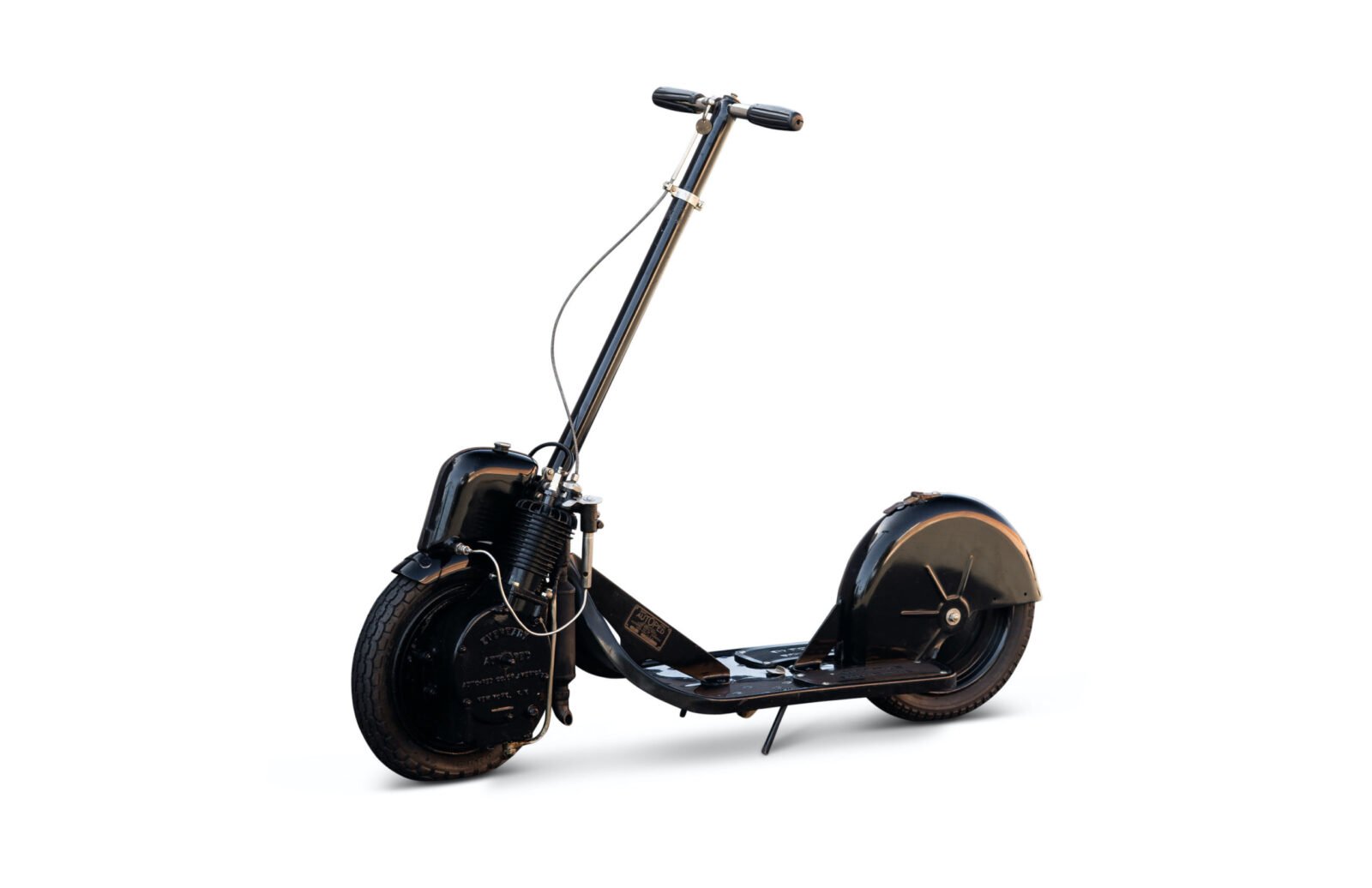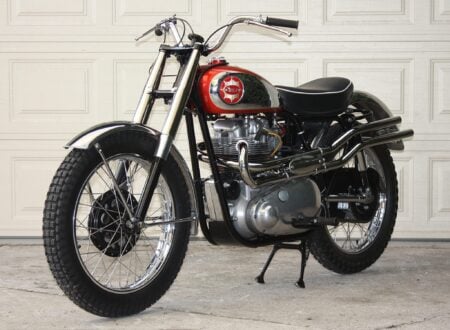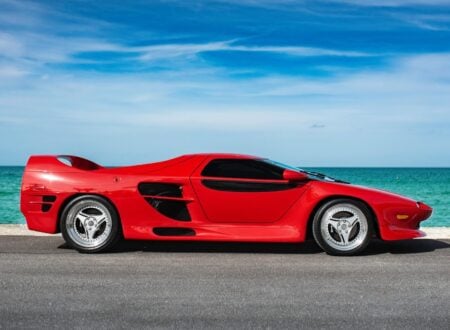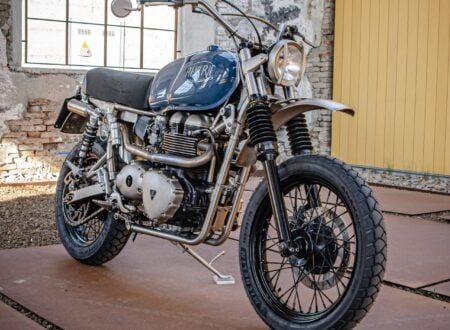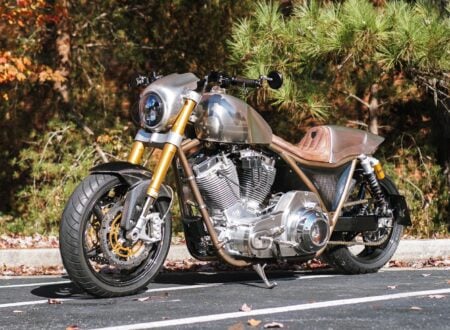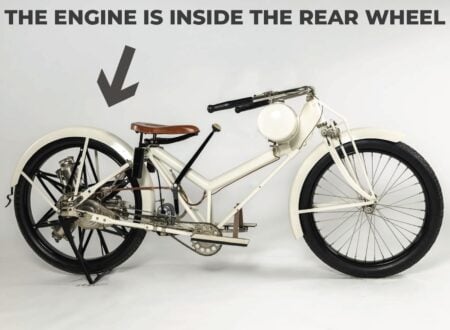The Autoped is widely regarded as being the first mass-produced motorized scooter, it was offered in both electric and gasoline versions, and the gasoline version was said to be capable of speeds of up to 35 mph.
It’s important to note that the Autoped wasn’t the first scooter or the first motorized scooter, however it was the first powered scooter to be built in large numbers on a production line, as a precursor to the wildly popular electric scooters of the modern age.
The operation of the controls on the Autoped is reasonably simple, there’s a lever on the handlebars that controls the throttle, you push the handlebars forward to engage the clutch and begin moving, and you pull them backwards to disengage the clutch and engage the brake. The rider stands on a central platform between two 10 inch tires, and the motor is installed over the front wheel next to a small fuel tank.
This method of moving the handlebars forwards or backwards to operate the engine/clutch/brake was almost certainly designed to make the Autoped as user-friendly as possible, and to ensure that if the rider fell off the back the handlebars would automatically move back to disengage the clutch and engage the brake.
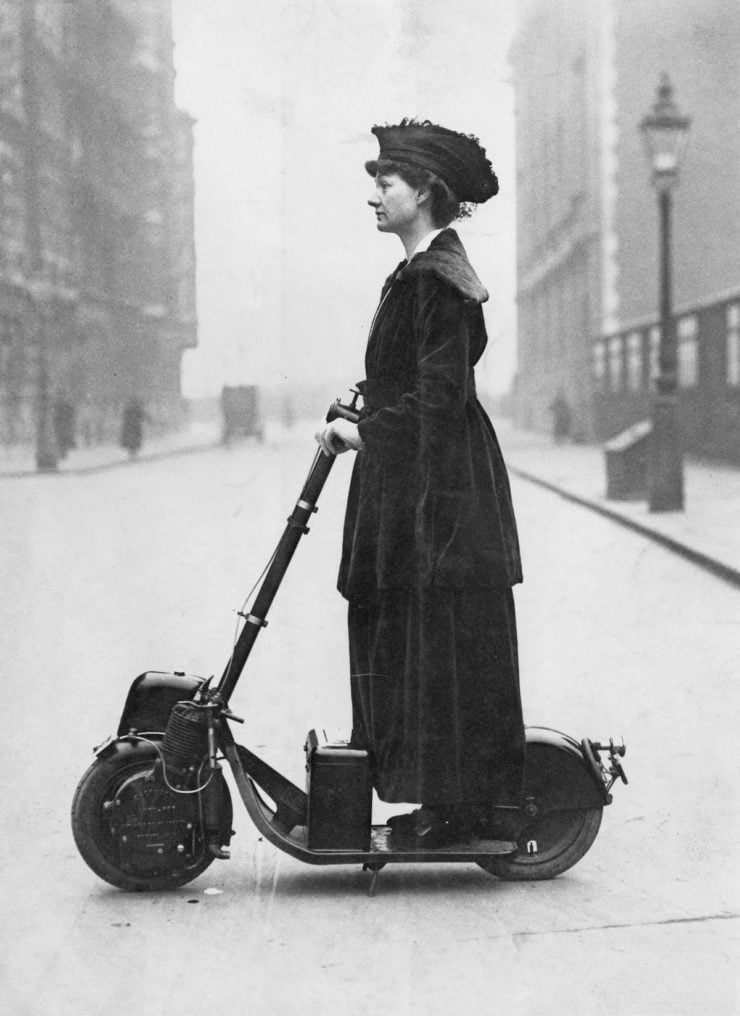
Above Image: Lady Florence Norman, a suffragette, on her motor-scooter in 1916, travelling to work at offices in London where she was a supervisor. The scooter was a birthday present from her husband, the journalist and Liberal politician Sir Henry Norman. Caption courtesy of Retronaut – Image is public domain.
Power for the gasoline Autoped was provided by an air-cooled, four-stroke, 155cc single-cylinder engine wth a single carburettor and a small exhaust with a discreet muffler. This engine only produced approximately 1.5 hp however that was more than enough given the typically rough roads of the era and somewhat limited brakes.
The following is an excerpt from an Autoped print advertisement:
“The Autoped is an ideal short distance conveyance for business or professional men or women to and from their places of business; for women to go shopping or calling; for physicians to make their regular daily calls or to answer hurry calls; for the older children to go about quickly for outing or school; for servants when they are sent on errands; for grocers, druggists and other merchants for quick delivery purposes; for commercial salesman to call on the trade; for employees to ride to and from work; for collectors; repairmen; messengers, and for anybody else who wants to save money, time and energy in going about. All will enjoy the comfort and pleasure of AUTOPEDING.”
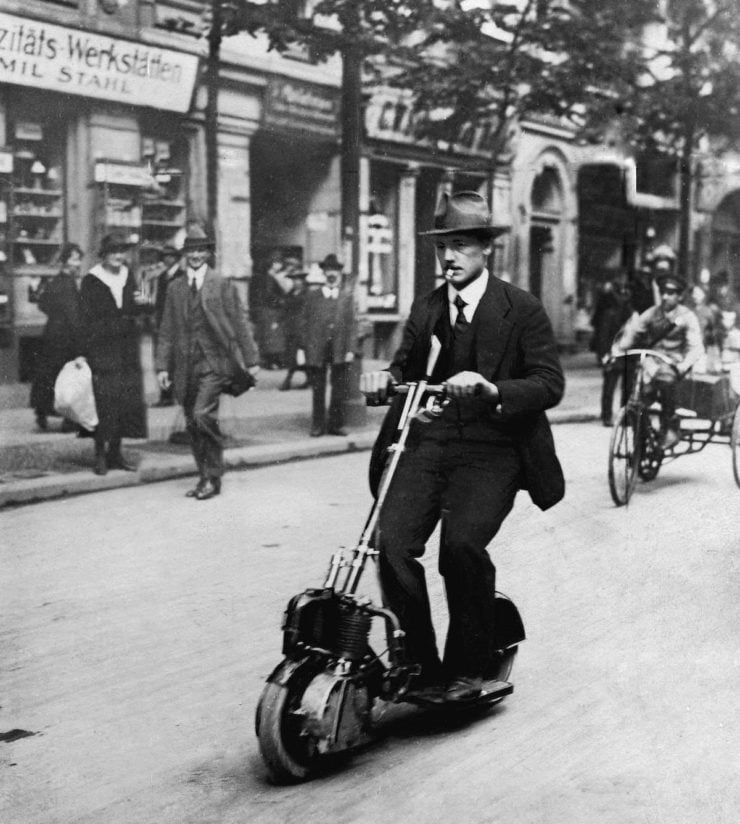
Above Image: A man riding a German-built Krupp Autoped – Image is public domain.
During WWI the Autoped was a godsend for many thanks to its low cost and very low fuel consumption. It also provided motorized transportation for many who couldn’t afford a car or a motorcycle, and many women adopted Autopeds for day-to-day travel and commuting – giving them new freedoms. Autopeds were also used by doctors, factory workers, office workers, postal workers, and even police officers.
The original patent for the Autoped was applied for in 1913 and granted in 1916 by the US Patent Office. Sales weren’t as brisk for the Autoped after WWI ended in 1918 and sadly the company folded in 1921, however Krupp manufactured their own slightly more powerful licensed version of the Autoped from 1919 to 1922.
The 1915 Autoped you see here is from the first year of production, it was formerly part of the famous Bill Harrah collection and it’s due to be offered by RM Sotheby’s in late September with no reserve. If you’d like to read more or register to bid you can click here to visit the listing.
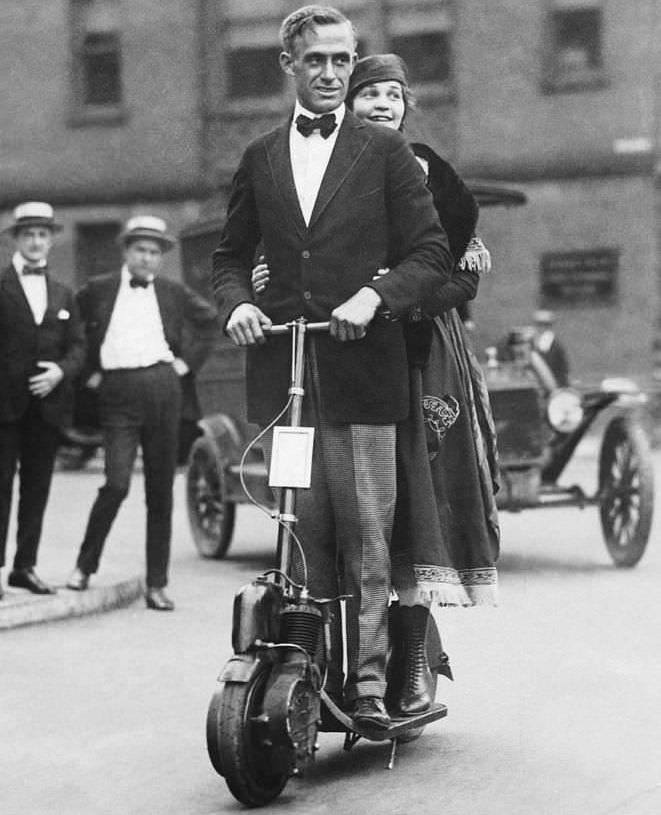
Above Image: An American couple sharing an Autoped – Image is public domain.
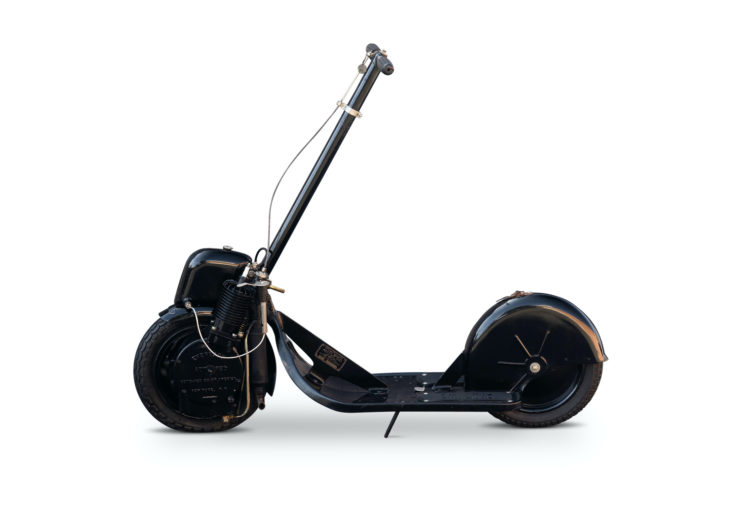
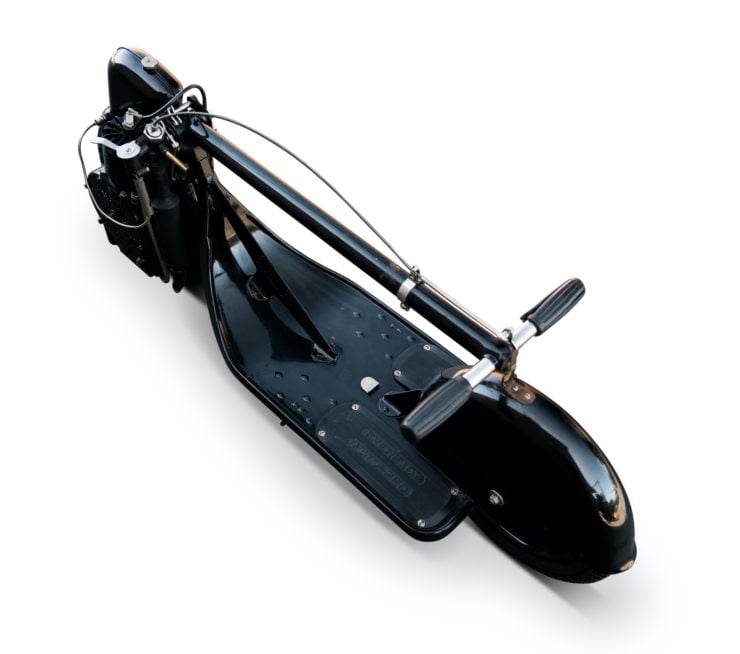
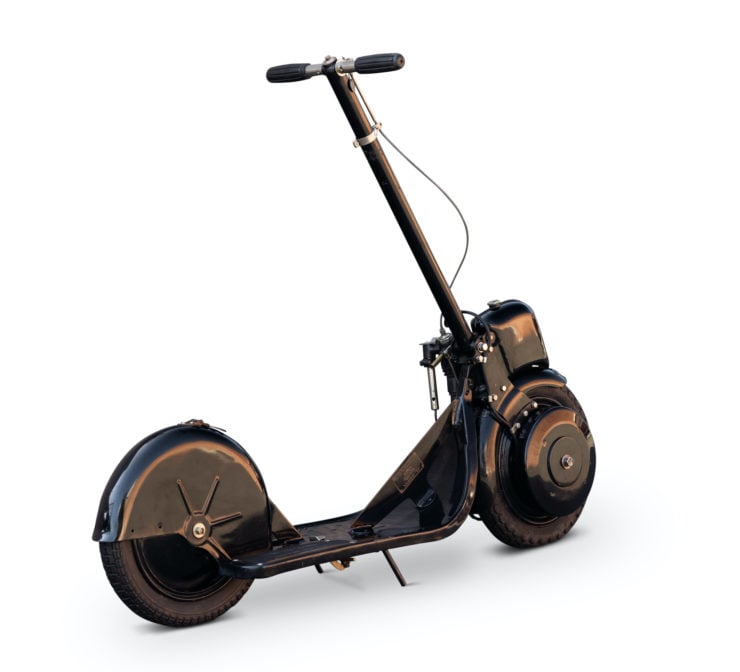
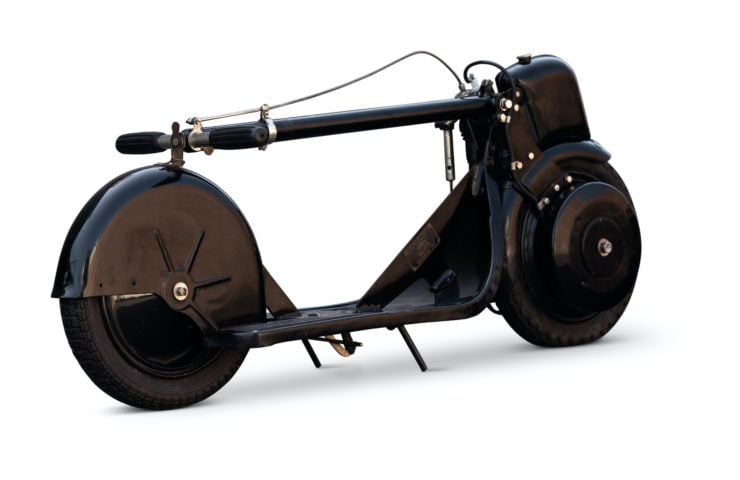
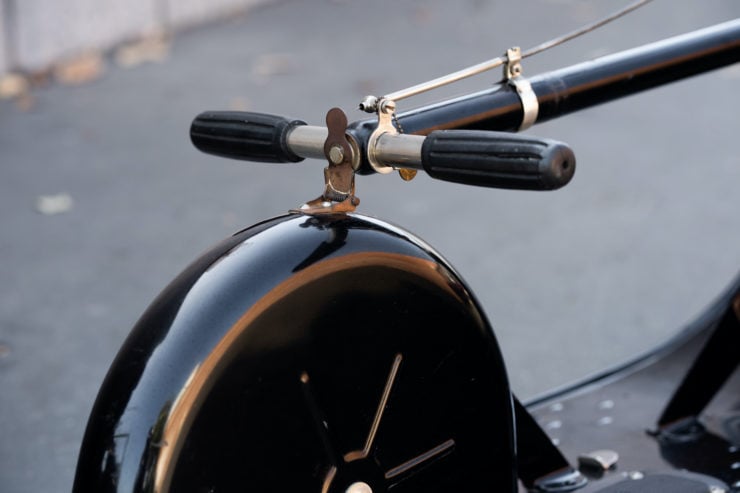
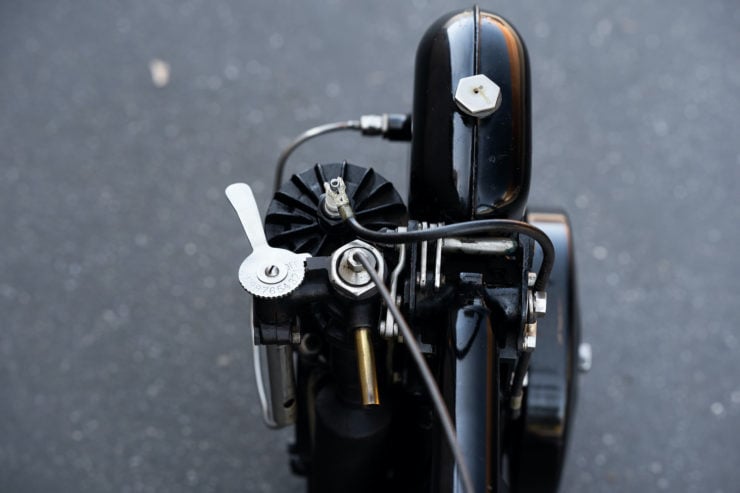
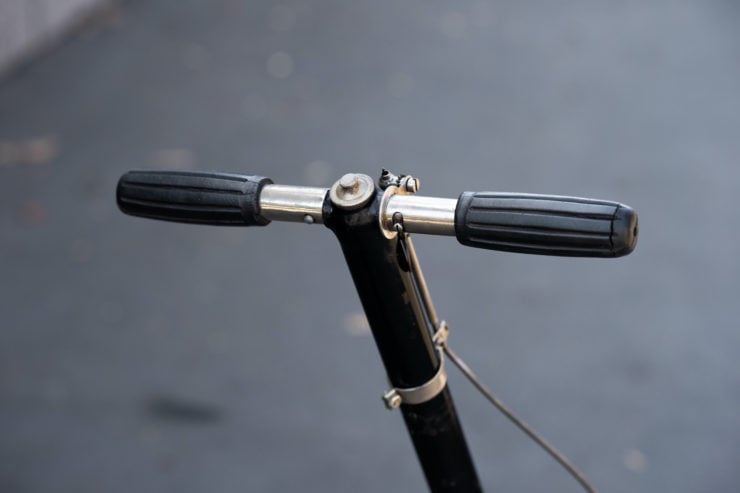
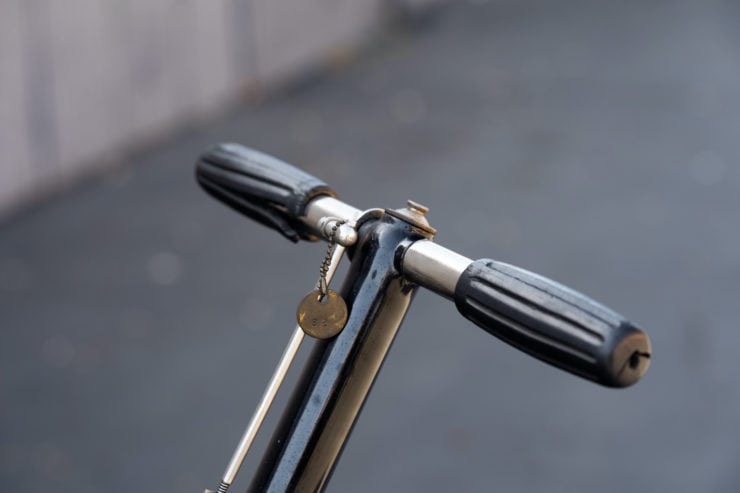
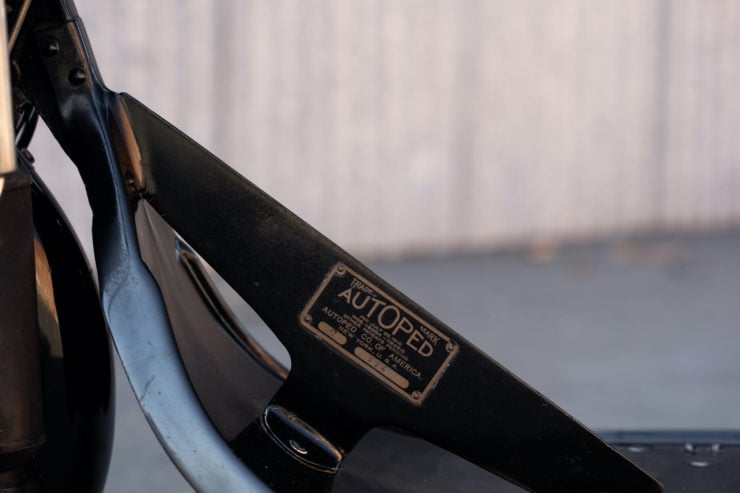
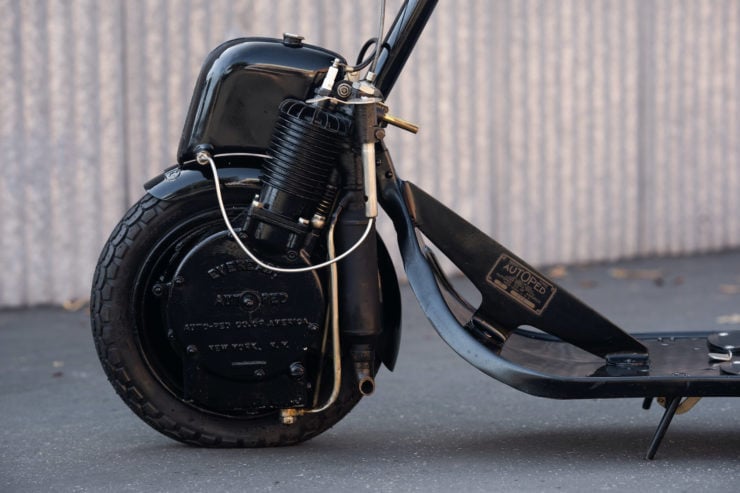
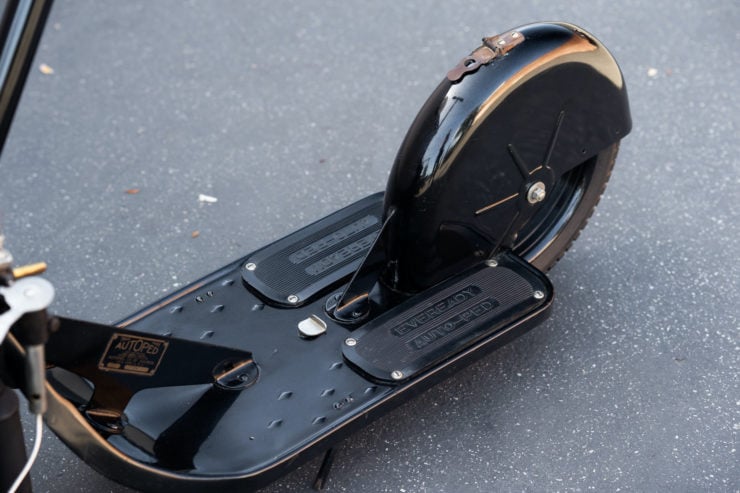
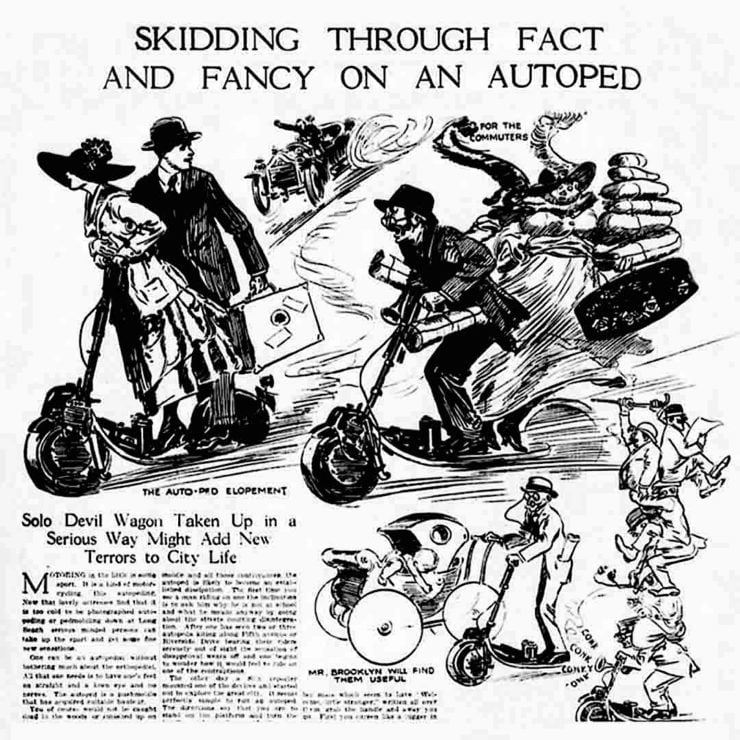
Images: ©2020 Courtesy of RM Sotheby’s

Articles that Ben has written have been covered on CNN, Popular Mechanics, Smithsonian Magazine, Road & Track Magazine, the official Pinterest blog, the official eBay Motors blog, BuzzFeed, Autoweek Magazine, Wired Magazine, Autoblog, Gear Patrol, Jalopnik, The Verge, and many more.
Silodrome was founded by Ben back in 2010, in the years since the site has grown to become a world leader in the alternative and vintage motoring sector, with well over a million monthly readers from around the world and many hundreds of thousands of followers on social media.

